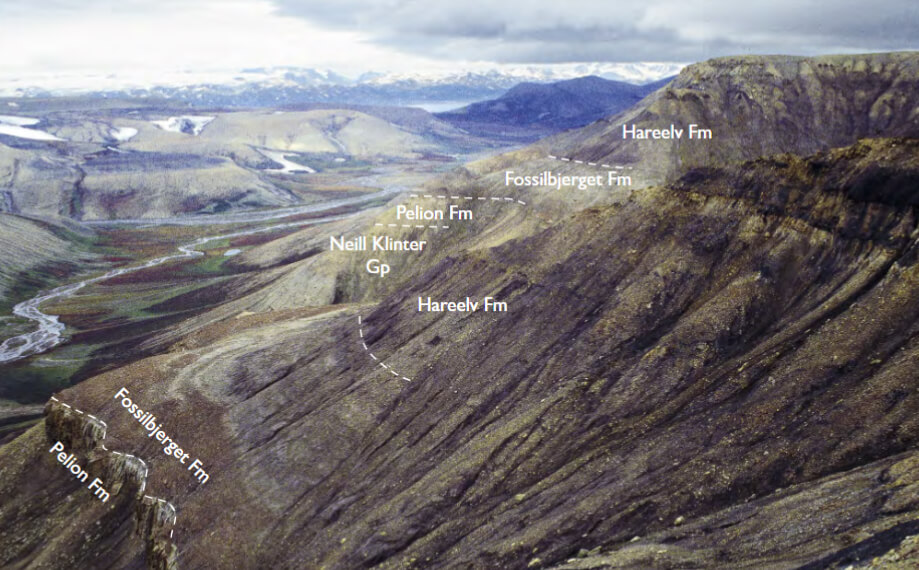
How to Cite
Share
Abstract
Data from the recently drilled, fully cored Blokelv-1 borehole and previous cored boreholes in the Upper Jurassic of Jameson Land, central East Greenland, are integrated with published field studies to address the depositional evolution of the Jameson Land Basin in the Oxfordian–Volgian. In Jameson Land, the succession represents a marine shelf-to-basin transect in a W–SW-dipping half-graben. Laminated organic-rich mudstones were deposited in the central deep parts of the basin and grade up-slope into bioturbated sandy mudstones. Extensive shallow marine – deltaic sand prograded from the western and northern basin margins and formed prominent sandy shelf-edge wedges. Sand-rich density flows initiated by periodic collapse of the shelf edge deposited massive sand bodies on the slope and basin floor; these sands were prone to post-burial remobilisation to form injectite bodies. Basin evolution was controlled both by relative sea-level changes, typically correlatable with regional and global sea-level curves, and by rift tectonics. During periods with high relative sea level, the organicrich muddy facies onlapped the sandy shelf environments; such periods of basinal expansion and onlap are recorded in the lower Oxfordian (Q. mariae Chronozone), the middle–upper Oxfordian (C. tenuiserratum – A. glosense Chronozones) and uppermost Oxfordian – upper Kimmeridgian (A. regulare – A. autissiodorensis Chronozones); the deepening, transgressive trend culminated in the mid-Kimmeridgian (A. eudoxus Chron). Marked progradation of the sandy shelf and associated deposition of gravity-flow sands on the slope and basin floor occurred in the early Oxfordian (C. cordatum Chron), the middle Oxfordian (C. densiplicatum Chron), the late Oxfordian (A. serratum Chron) and the early Volgian (P. elegans Chron). The basin architecture reflects periodic differential subsidence on the W- to SW-dipping fault block. The lower to middle Oxfordian is highly condensed in the east (<10 m) and thickens markedly towards the west (>300 m), reflecting accumulation during rift/fault-controlled block rotation. The upper Oxfordian – Kimmeridgian, in contrast, shows a broadly symmetrical distribution and records uniform regional subsidence.
How to Cite
Share
Copyright (c) 2018 Morten Bjerager, Peter Alsen, Jørgen A Bojesen-Koefoed, Tove Nielsen, Stefan Piasecki, Anders Pilgaard

This work is licensed under a Creative Commons Attribution 4.0 International License.
Downloads
Editors: Jon R. Ineson and Jørgen A. Bojesen-Koefoed
The exposed Jurassic succession in East and North-East Greenland has long been presented as an analogue for equivalent deeply buried strata on the Norwegian conjugate shelf and offshore North-East Greenland. In particular, the Upper Jurassic marine mudstone succession is often ascribed source-rock potential as [...]









